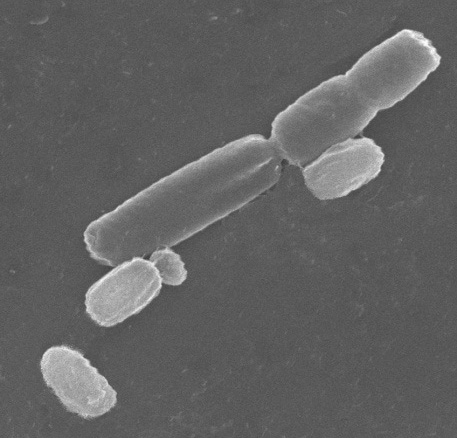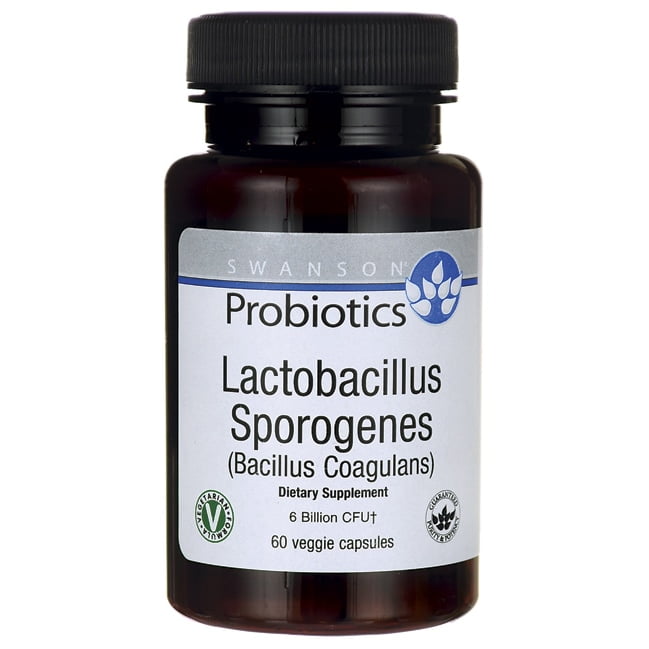Blog entry by Shelia Lombardo
However, neither of these methods addresses the underlying trigger of food allergy and intolerance. Over the past few decades, researchers are studying that the gut microbiome is vital for many elements of your well being resembling your digestive health, immune well being and absorption of nutrients from meals. The knowledge on this website has not been evaluated by the Food & Drug Administration or some other medical body. Vitamin c is in the drug class vitamins. Coq10 is within the drug class nutraceutical merchandise. The PCR products were used as probes for Southern blotting of homologous chromosomal DNA. To be able to clone the spoIIA operon from three different Bacillus and Paenibacillus species, we designed two units of PCR primers based on three beforehand published Bacillus spoIIA sequences. To clone the operon, one PCR primer corresponding to the C-terminal region of SpoIIAB, and a second corresponding to a region near the middle of SpoIIAC, were designed on the premise of the three beforehand printed Bacillus spoIIA sequences. The spoIIA locus of Bacillus coagulans (Bc) was cloned into pTZ18R and the nucleotide sequence was determined. DNA corresponding to spoIIA from the three organisms was identified by screening chromosomal DNA libraries, and cloned. It was recommended that the 50-kDa fragment, an entire cytoplasmic pole of band 3, contained the blocked amino-terminal finish of band 3. Three different fragments, 45-, 39-, and 38-kDa fragments, have been produced by cleavage at distances of molecular weight 5000, 11,000, and 12,000 respectively, from the amino-terminus of the 50-kDa fragment.
 Four fragments derived from the cytoplasmic pole of bovine band three had been remoted, and their potential to bind glyceraldehyde-3-phosphate dehydrogenase from bovine erythrocyte and their amino-terminal major construction were examined. M. fervidus grows optimally at 84°C with a maximal development temperature of 97°C. The paper consists of an in depth comparability of the present structure with four different homologous enzymes extracted from mesophilic in addition to thermophilic organisms. The structural comparability with holo-GAPDH from the same species reveals a conformational change induced by coenzyme binding much like that noticed in Bacillus stearothermophilus GAPDH however to a lesser extent. GAPDH from M. fervidus adopts a homotetrameric quaternary construction which is topologically similar to that observed for its bacterial and eukaryotic counterparts. The enzyme glyceraldehyde-3-phosphate dehydrogenase (GAPDH) from the archaea shows low sequence id (16-20 %) with its eubacterial and eukaryotic counterparts. The low sequence similarity between archaeal GAPDHs and enzymes from the 2 other kingdoms, in addition to the issue in aligning residues implicated within the catalytic mechanism, have led to the suggestion that archaeal GAPDHs are unrelated to their bacterial and eukaryotic counterparts and show a convergent molecular evolution within the catalytic region of their construction. The difference in habits underneath low and excessive ionic strength situations can't be defined by the very low ranges of proteolytic activity in crude extracts.
Four fragments derived from the cytoplasmic pole of bovine band three had been remoted, and their potential to bind glyceraldehyde-3-phosphate dehydrogenase from bovine erythrocyte and their amino-terminal major construction were examined. M. fervidus grows optimally at 84°C with a maximal development temperature of 97°C. The paper consists of an in depth comparability of the present structure with four different homologous enzymes extracted from mesophilic in addition to thermophilic organisms. The structural comparability with holo-GAPDH from the same species reveals a conformational change induced by coenzyme binding much like that noticed in Bacillus stearothermophilus GAPDH however to a lesser extent. GAPDH from M. fervidus adopts a homotetrameric quaternary construction which is topologically similar to that observed for its bacterial and eukaryotic counterparts. The enzyme glyceraldehyde-3-phosphate dehydrogenase (GAPDH) from the archaea shows low sequence id (16-20 %) with its eubacterial and eukaryotic counterparts. The low sequence similarity between archaeal GAPDHs and enzymes from the 2 other kingdoms, in addition to the issue in aligning residues implicated within the catalytic mechanism, have led to the suggestion that archaeal GAPDHs are unrelated to their bacterial and eukaryotic counterparts and show a convergent molecular evolution within the catalytic region of their construction. The difference in habits underneath low and excessive ionic strength situations can't be defined by the very low ranges of proteolytic activity in crude extracts.

Among these, the 50-and 45-kDa fragments complexed with the enzyme to inhibit its catalytic exercise under conditions of low ionic power, in a trend much like that in humans. As compared with the structure of the enzyme from the extreme thermophile Thermus thermophilus (TtIPMDH), a new quick beta-sheet (residues 329-330 and 340-341) absent in TtIPMDH is formed by the insertion of 5 residues in BcIPMDH. Intrinsic thermostability of enzymes from obligate and extreme thermophiles has been the final rule in research on mechanisms of thermophily. Among the varied proposals which were made in attempting to elucidate the flexibility of thermophiles to reproduce at excessive temperatures, there's little doubt that obligate and extreme thermophiles synthesize proteins (and other molecules) which have ample intrinsic molecular stability to withstand elevated thermal stress. There is a relocation of the active-site residues inside the catalytic domain of the enzyme. The first one, named α4, is situated within the catalytic area and participates within the enzyme structure at the quaternary structural stage. The organism represented what was to develop into a big and diverse genus of bacteria named Bacillus, within the Family Bacillaceae.
The second one, named αJ, occurs on the C terminus and contributes to the molecular packing inside each monomer by filling a peripherical pocket within the tetrameric meeting. Aggregation happens when the enzyme is heated at 50 ° or 55 °C. The enzyme has several variations in secondary structure when in contrast with eubacterial GAPDHs, with an general enhance within the variety of α-helices. Within the crystalline state of apo-GAPDH, the general constructions of the subunits are similar to each other; however, significant variations in temperature components and minor variations in area rotation upon coenzyme binding had been noticed for various subunits. The variations in magnitude in the course of the apo-holo transition between these two enzymes have been analyzed with respect to the change of the amino acid composition within the coenzyme binding pocket. Participants were divided into two teams; a management and probiotic. Participants took part in two efficiency check familiarization periods prior to beginning supplementation. Several research have discovered an affiliation between supplementation with prebiotic oligosaccharides and a lowered incidence of allergic disease. It was reported that B. coagulans was discovered suitable for human consumption. Simultaneous consumption of pentose and hexose sugars: An optimal microbial phenotype for environment friendly fermentation of lignocellulosic biomass. In keeping with Neotonics' manufacturer, the intestine performs a pivotal position in controlling cellular turnover.